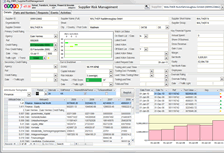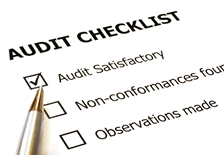Supply Chain Risk Management and Non-Conformity
Place risk where it is most appropriate to do so
"It's good to take risks - if you manage them well" (McKinsey). How true! A lot of companies cascade risk down the supply chain to the point of the weakest link where the supplier accepts risk knowing it will go insolvent if the risk occurs - breaking the whole chain. Often every part of the supply chain will pay heavy insurance premiums to cover the same risk. Designers in risk averse companies, will put safety margin on top of safety margin - eventually getting to a point where they are no longer competitive (not uncommon in the West). Many recognise that suppliers will load risk premiums into prices.
The key to know where to put risk is to analyse it
The analysis needed to determine where best to place risk have many common features with classic sourcing strategy analysis looking at spend, criticality, power balance, and supplier stability. A wise buyer will use this information to selectively place risk where it can best be influenced and will not apply a convenient "one size fits all" approach.
Non-conformity can be closely linked to risk
Clearly if a part breaks, and it is covered by guarantee, the supplier should carry the direct cost. Most suppliers will agree to this. The debate arises around consequential damages and when to agree to a concession. Quite often, with proper cross-functional input, concessions can be agreed at low risk and/or consequential damages can be carried in other ways. Lawyers are (or should be) the point of last resort.
Proactive Financial Risk Management

Developed for the automotive sector, this solution captures credit ratings, amongst other data, analyses trends, and produces reports to identify suppliers at financial risk
See XTAPS for more information ...
Part Level Risk Analysis

This part level risk analysis incorporated many factors (quality, lead times, usage, spend, etc) in order to plot Impact vs Vulnerability in the context of spend. This (customisable) analysis focussed on factors which can be influenced.
Non-Conformity (and root causes)

The problem with conformity is it can be very subjective. It can be driven by over-specification, it can relate to inappropriate process expectations, unrealistic requirements forced on a supplier desparate for work and so on. Suppliers will cost risk into price.